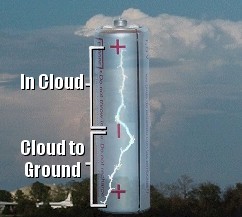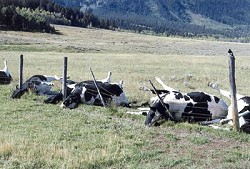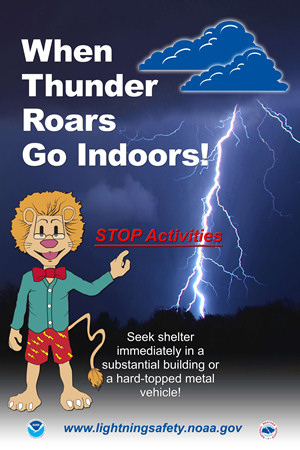 |
| June 18 - 24, 2023 |
 |
So there you are outdoors. Whether it's a baseball game, putting laundry on a clothesline or attending a graduation ceremony...you could become vulnerable. How? While you are keeping track of the score, you may lose track of the weather. |
| Lightning tends to catch people off guard. It is quiet, but it is also deadly. In an average year, lightning kills 35 to 40 people in the United States (based on data from 1991-2020). Note: The average dropped to just over 20 fatalites annually in the last ten years. |
 |
|
Statistics show that Arkansas is a Top 10 state as far as lightning activity. From 2009 through 2018, the state ranked 7th nationally for lightning strikes (averaging more than 830,000 cloud-to-ground lightning flashes per year) and ranked 5th for the amount of lightning per square mile (15.7 lightning flashes per square mile per year).
|
|
Arkansas is also on the lightning fatality Top 10 list. The state ranked 10th nationally for number of lightning deaths from 1959 to 2022, with Florida, Texas, and North Carolina topping the list.
|
| Number of Lightning Fatalities (1959-2022) |
| State |
Deaths |
| Florida |
519 |
| Texas |
234 |
| North Carolina |
205 |
| Ohio |
151 |
| Colorado |
150 |
| Louisiana |
147 |
| New York |
145 |
| Tennessee |
144 |
| Pennsylvania |
139 |
| Arkansas |
128 |
| Maryland |
127 |
| Alabama |
125 |
|
| |
| Locally, there were 128 deaths and 331 injuries due to lightning from 1959 to 2022. The deaths and injuries occurred mostly in the summer months when people are most likely to be outdoors. Check out the statistics below... |
| |
| Arkansas Lightning Statistics (1959-2022) |
| Month |
Deaths |
Injuries |
| January |
0 |
3 |
| February |
1 |
5 |
| March |
9 |
5 |
| April |
1 |
38 |
| May |
14 |
42 |
| June |
37 |
74 |
| July |
32 |
59 |
| August |
25 |
82 |
| September |
7 |
16 |
| October |
1 |
2 |
| November |
0 |
2 |
| December |
1 |
3 |
|
|
In 2022, there were no fatalities or injuries due to lightning in Arkansas. Across the country, there were nineteen lightning fatalities, which is below the national average.
|
 |
Where does lightning come from? Lightning is a part of an atmospheric battery surrounding a thunderstorm. It is produced due to the magnetic attraction between the base of a storm cloud (negative charge) and the ground (positive charge). |
| To go from cloud to ground, lightning must travel through air...a poor conductor of electricity. To make a connection, lightning will tend to go the shortest distance possible. Given this, lightning tends to strike tall isolated objects such as buildings, antennas and trees. |
 |
 |
Away from the city and in open fields, the tallest objects may be you or your pets! |
| In the picture: Lightning struck a metallic fence, with the current traveling along the fence. Cows touching the fence were killed. The picture is courtesy of Ruth Lyon-Bateman. |
| Victims of Lightning (465 Fatalities) Across the Country (2006-2022) |
| Criteria |
Percent |
| Male |
80% (370 of 465 fatalities) |
| During Summer (Jun/Jul/Aug) |
73% (339 of 465 fatalities) |
| Leisure Activities |
63% (34% of these were water related) |
|
|
|
| In the video: Lightning is more dangerous than many people think. Watch this fun and informative video so that you will learn how to be safe! |
|
| |
|
So now that you know the facts, how do you protect yourself from lightning? Education is the key to understanding lightning and to avoid becoming a statistic. For years, the National Weather Service has provided information to the public about lightning in hopes that citizens could make life saving decisions when confronted by lightning. Now the National Weather Service is taking it one step further.
|
| In the poster to right: Leon the Lightning Lion says, "When Thunder Roars, Go Indoors!" |
 |
|
| The National Weather Service is so serious about lightning that it has a public safety awareness campaign called "When Thunder Roars, Go Indoors!" The campaign is designed to increase lightning awareness and decrease lightning deaths and injuries. |
 |
For more on lightning...there is a very useful website available. To go to the website, click here. |
|